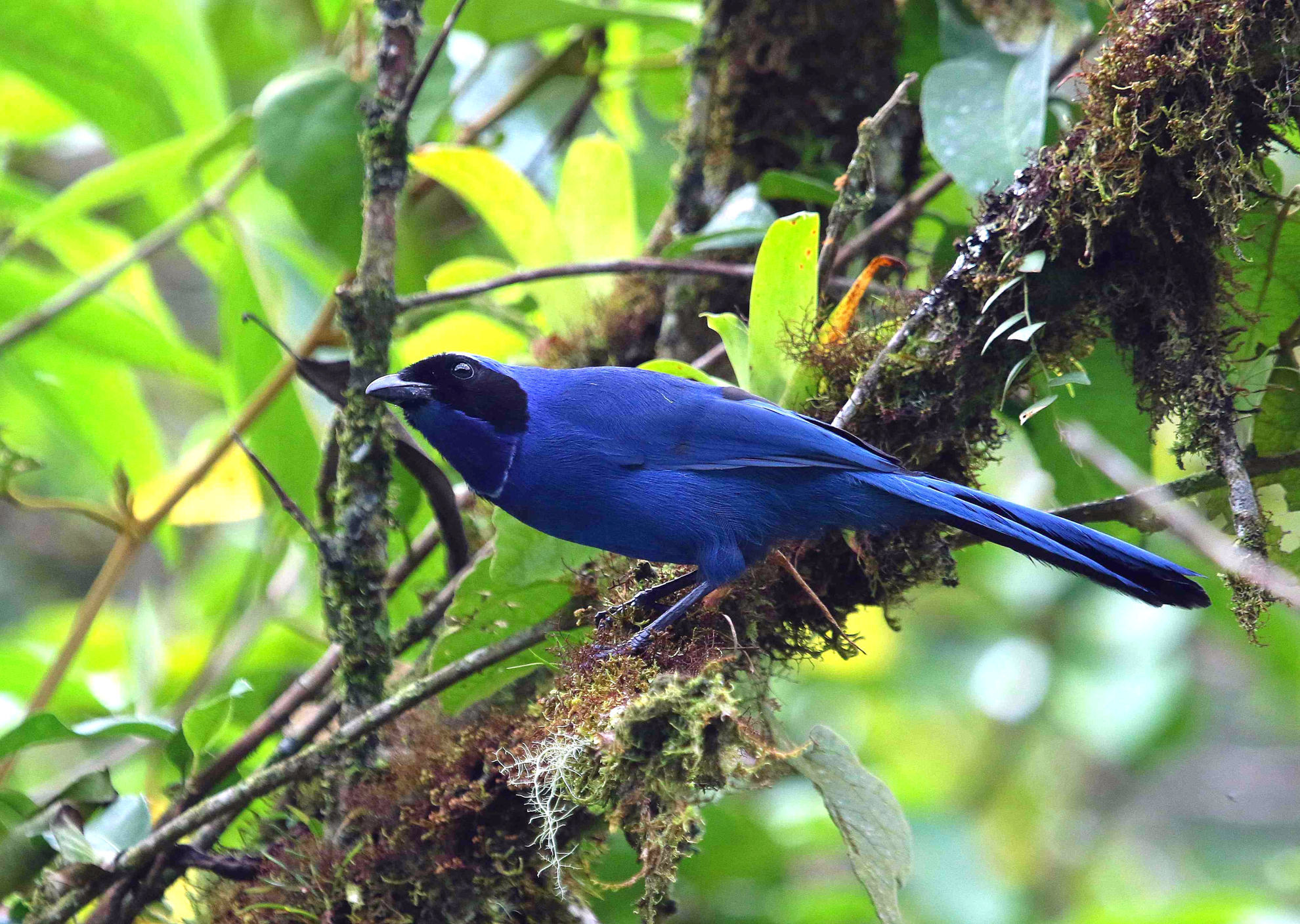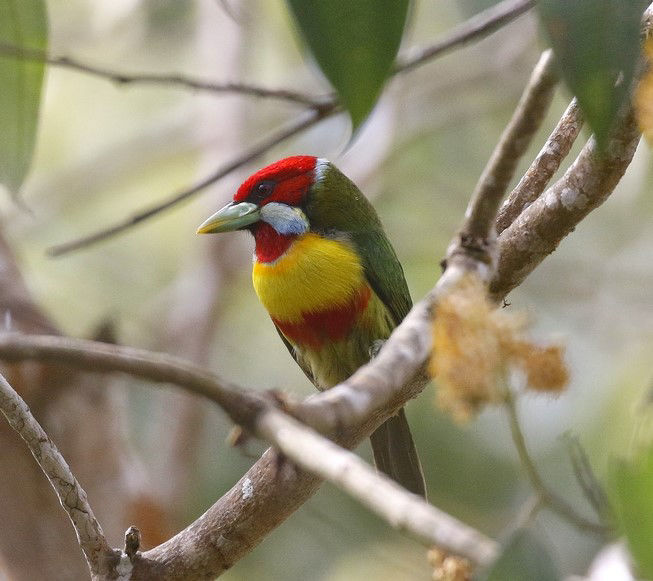Toll Free: 800.328.8368
Phone: 512.328.5221
Grand Bolivia: Part II
Upcoming Dates
September 23 - October 4, 2027
Departs
Cochabamba
Returns
Cochabamba
Tour Limit
9

White-collared Jay © Andrew Whittaker
Bolivia is truly a hidden gem offering a remarkable avian diversity with many exciting and varied habitats. This overlooked birder’s paradise (with a wonderful new Bolivian field guide) is home to no fewer than 1,450 bird species—in an area barely a tenth the size of the United States! Grand Bolivia Part II focuses on Bolivia’s fabulous mountain habitats, encompassing cactus-clad valleys home to stunning hummingbirds, remote lakes, and the famous Lake Titicaca shimmering with thousands of flamingoes and its lovely grebe. We will seek out many exciting endemics and near-endemics along with a wealth of other seldom seen beautiful South American birds. Combining Parts I and II offers the possibility of nearly 650 bird species! Excellent photographic opportunities throughout.
Bolivia holds some 25+ endemics, close to 100 near-endemics (easier to see here than anywhere else), and several newly described species. This unique landlocked paradise is one of the world’s last birding frontiers, where new discoveries are almost expected. With minimal overlap from Part I, we seek out the near-endemic Titicaca (flightless) Grebe; spectacular Hooded Mountain-Toucan; Blue-banded and Chestnut-tippled toucanets; rare Black-winged Parrot; Yungas Pygmy-Owl; Rufous-bellied Seedsnipe; superlative hummers including the endemic Black-hooded Sungem and spectacular Red-tailed Comet and Wedge-tailed Hillstar; confiding Scribble-tailed Canastero; endemic Rufous-faced and Bolivian antpittas; rare Scimitar-winged Piha; and endemic Black-throated Thistletail. We should also enjoy all three flamingoes; Giant Conebill and Giant Coot; Barred and Band-tailed fruiteaters; Chestnut-crested Cotinga; Rufous-bellied Mountain-Tanager; Green-throated Tanager; and endemic Cochabamba Mountain-Finch, all of which burnish Bolivia’s reputation as an undiscovered birding mecca. This breathtakingly scenic trip focuses on the heart of the enchanting Andes covering all of its incredibly varied habitats, each with a unique plethora of avian gems—all set against a backdrop of spectacular canyons and towering snow-covered volcanic peaks that reach to 21,000 feet. Of course, no trip to the Bolivian Andes would be complete without an opportunity to explore the riveting beauty of the massive Lake Titicaca, the world’s highest navigable lake, and its intriguing Aymara indigenous people poling their famous reed boats along the lake shore, as well as its enigmatic grebe.
Bolivia has made great strides in the past two decades, upgrading its infrastructure with enormously improved roads and surprisingly good guest accommodations—excellent in some areas—and the country has made significant progress socially and economically as well. Despite such modernization, age-old customs flourish and may be on display anywhere, as evidenced by colorful and often strictly traditional clothes and dress, diverse markets, and pastoral landscapes.
Cochabamba is a strategic, habitat-diverse location ideal for beginning our Andean exploration, featuring bird-rich wetlands, hillsides cloaked in humid cloudforest and rich Yungas forests, and sculptured cactus-clad scrub valleys and uplands with panoramic overlooks in the Puna. We can expect encounters with a rich variety of species, including Black-and-chestnut Eagle, Andean Lapwing, Andean Avocet, Golden-headed and Crested quetzals, Masked Trogon, Violet-throated Starfrontlet, Scaled Metaltail, Orange-browed Hemispingus, White-collared Jay, Fulvous Wren, tanagers galore including Chestnut-bellied Mountain-Tanager, endemic Rufous-faced and Bolivian antpittas, and Black-throated Thistletail. Shadowed by the mighty snow-capped Cerro Tunari, we’ll bird the unique Polylepis forest for the endemic Cochabamba Mountain-Finch, White-capped Dipper, an incredible lineup of hummers—Wedge-tailed Hillstar, Red-tailed Comet, and Giant Hummingbird, the rare and local Rufous-bellied (Saltator) Mountain-Tanager, endemic Gray-bellied Flowerpiercer, Fulvous-headed Brushfinch, and iconic Giant Conebill. Higher up we’ll seek Glacier Finch, the odd boulder-loving Boulder Finch, various ground-tyrants and sierra-finches, and Andean Flicker.
Ascending to La Paz encompasses a tremendous transect of habitats from both wet and dry Puna to the rocky rain-shadow valleys characterized by stark columnar cactus-clad slopes. Here, remote picturesque lakes like the famous Titicaca are home to soaring Andean Condors and the incredible flightless Titicaca Grebe. Andean waterfowl abound in brackish lakes among the shimmering pinks of flamingoes, in addition to Many-colored Rush Tyrant, Black-throated Flowerpiercer, and huge Giant Coot. Secluded hill forests are home to two endemics: the stunning Black-hooded Sunbeam and skulky Berlepsch's Canastero, plus Slender-billed Miner, Huayaco Tinamou, and Darwin’s Nothura.
For our grand finale, we are based in Coroica, where we will enjoy three days of non-stop birding in two very different settings from pristine cloud forest (on one of the birdiest roads in South America) to scenic Puna for high elevation specialties. We can hope for Andean Condor, Rufous-bellied and Gray-breasted seedsnipes, Versicolored Barbet, Hooded Mountain-Toucan, Southern Emerald Toucanet, Crimson-mantled Woodpecker, rare Lanceolated Monklet, Great Sapphirewing, Gould’s Inca, Blue-capped Puffleg, endemic Bolivian and Rufous-faced antpittas, Stripe-headed and Undulated antpittas, recently described Diademed Tapaculo, Yungas Manakin, a magical set of tanagers—Golden-collared, Grass-green, Rust-and-yellow, Scarlet-bellied, Blue-winged, Orange-eared, Golden-naped, Blue-and-black, and Hooded Mountain Tanager, Chestnut Crested Cotinga, poorly-known Scimitar-winged Piha, White-eared Solitaire, Puna Tapaculo, and Scribble-tailed and Line-fronted canasteros, before returning to finish in La Paz.
Good to excellent accommodations and food; excellent quiet roadside birding in Andes; no really difficult hikes; fairly easy birding and walking with bus following along on trails; we carefully plan to avoid altitudinal sickness, gradually becoming acclimated; travel by comfortable air-conditioned bus and one flight from Cochabamba to La Paz; pace moderate with midday breaks but several early starts; nice and cool pleasant temperatures throughout; early morning around Titicaca and in the high Andes can be cold.

Versicolored Barbet © Andrew Whittaker
Route Map
Tour Leaders

Local
Leader
Field Reports
No Field Reports
Connecting Tours
No Connecting Tours
Operations Manager

Celeste
Dillon
Questions? Contact the Operations Manager or call 800.328.8368 or 512.328.5221



